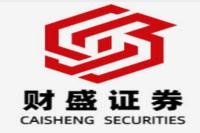Qualcomm's Acquisition of Intel: A Post-Election Gamble? (Meta Description: Deep dive into Qualcomm's potential Intel acquisition, analyzing market implications, strategic considerations, and post-election uncertainties. Expert insights and predictions included.)
Hold onto your hats, folks! The tech world is buzzing with speculation about a potential blockbuster deal: Qualcomm's rumored bid for Intel. While whispers of this mega-merger have been swirling for months, insiders are now suggesting a fascinating twist – Qualcomm is apparently waiting until after the US November elections to make its move. This strategic delay raises a plethora of questions, sparking intense debate amongst analysts, investors, and industry experts. Is this a calculated risk? A smart play to navigate political uncertainties? Or simply a case of "let's wait and see"? This article delves deep into the intricacies of this potential acquisition, exploring the potential benefits and drawbacks for both companies, the broader implications for the tech landscape, and the crucial role the upcoming US elections might play. We'll unpack the strategic reasoning behind the delay, analyze the market forces at play, and offer insightful predictions based on years of experience in the semiconductor industry. Get ready for a rollercoaster ride through the electrifying world of high-stakes corporate acquisitions! This isn't just another news story; it's a potential game-changer, and we're here to break down every angle. So buckle up, because things are about to get interesting...
Qualcomm and Intel: A Strategic Merger?
The potential union of Qualcomm and Intel represents a seismic shift in the tech landscape. Qualcomm, the undisputed king of mobile chipsets, and Intel, a titan in PC processors and a growing force in data centers, possess complementary strengths that could create a behemoth with unparalleled market dominance. Imagine a company controlling both the brains of your smartphone and your computer – a truly formidable force. But this isn't just about market share; it's about strategic synergy.
Qualcomm's expertise in mobile technology, 5G, and modem chips could significantly bolster Intel's ambitions in the burgeoning 5G infrastructure market. Conversely, Intel's advanced manufacturing capabilities and presence in the data center arena could provide Qualcomm with a crucial edge in developing high-performance, next-generation chips. The potential for cross-pollination of technologies and economies of scale is staggering. But, caveat emptor, as the saying goes. There are significant hurdles to overcome. Antitrust concerns alone could derail the entire process.
Potential Synergies and Challenges
| Synergy | Challenge |
|---------------------------------------|-----------------------------------------------|
| Enhanced 5G infrastructure capabilities | Antitrust regulatory hurdles |
| Expanded market reach and customer base | Integration of disparate corporate cultures |
| Access to advanced manufacturing processes | Potential job losses and restructuring challenges |
| Development of next-generation chips | Managing competing product lines and strategies |
| Cost savings through economies of scale | Maintaining innovative spirit post-merger |
This potential merger is a high-stakes game of chess, demanding careful consideration of numerous factors. Successfully navigating these challenges would require expert leadership, meticulous planning, and a degree of luck.
Market Implications: A Ripple Effect
The implications of a Qualcomm-Intel merger extend far beyond the two companies themselves. The combined entity would wield immense influence over the entire semiconductor industry, potentially impacting pricing, innovation, and competition. This could trigger a domino effect, influencing the strategies of other major players, leading to new alliances, and reshaping the competitive landscape. Smaller companies might find themselves squeezed out, while larger competitors would need to adapt quickly to maintain their market share. It’s a game of survival of the fittest, and only the most agile and adaptable will thrive.
The Election Factor: A Calculated Pause?
The decision to postpone the acquisition until after the US elections is a fascinating strategic move. Several factors could be at play. Firstly, the incoming administration's stance on mergers and acquisitions could significantly impact the deal's approval process. A more interventionist approach might necessitate additional hurdles and delays. Secondly, the political climate could influence investor sentiment and market valuations, affecting the deal's feasibility. Waiting for the dust to settle after the elections minimizes the risk of unexpected political changes undermining the deal.
It's crucial to note that this "wait-and-see" approach isn't without risks. Delaying the acquisition could allow competitors to gain ground, or even trigger a shift in market dynamics that could make the deal less attractive. It's a high-stakes gamble, and only time will tell if it pays off.
The Future is Uncertain: Predictions and Speculations
Predicting the outcome of such a complex situation is inherently difficult. However, based on years of experience analyzing similar mergers and acquisitions in the tech industry, several plausible scenarios emerge:
- Successful Acquisition: If the political climate remains favorable and antitrust concerns are addressed effectively, the acquisition could proceed smoothly, creating a powerful new force in the tech world.
- Negotiation Breakdown: Differences in valuation, disagreements over strategic direction, or insurmountable regulatory hurdles could lead to the collapse of negotiations.
- Delayed Acquisition: The deal might be postponed for an extended period, giving both companies time to address concerns and re-evaluate the strategic merits of the merger.
- Alternative Acquisition: If the Intel deal falls through, Qualcomm might pursue other acquisition targets or focus on organic growth.
The upcoming months will be crucial in shaping the future of this potential mega-merger. Stay tuned!
Frequently Asked Questions (FAQs)
Q1: What are the main benefits of a Qualcomm-Intel merger?
A1: The main benefits include enhanced 5G capabilities, expanded market reach, access to advanced manufacturing, and cost savings through economies of scale. It also offers the potential for faster innovation and the development of next-generation technologies.
Q2: What are the potential risks and challenges?
A2: Significant risks include antitrust regulatory hurdles, integration challenges, potential job losses, and the risk of clashing corporate cultures. Maintaining innovation post-merger is another critical challenge.
Q3: Why is Qualcomm waiting until after the US election?
A3: The delay is likely due to concerns about the incoming administration’s approach to mergers and acquisitions, as well as potential market volatility related to the election outcome.
Q4: What are the potential implications for other tech companies?
A4: A successful merger could reshape the competitive landscape, potentially forcing other players to adapt their strategies and alliances. Smaller companies might face increased pressure, while larger competitors will likely need to respond with their own strategic moves.
Q5: What is the likelihood of the deal succeeding?
A5: The likelihood of success is uncertain and depends on several factors, including the regulatory environment, market conditions, and the ability of the two companies to successfully integrate their operations.
Q6: What are the alternatives if the deal fails?
A6: If the Intel deal falls through, Qualcomm might pursue other acquisition targets, focus on organic growth, or explore strategic partnerships.
Conclusion
The potential Qualcomm-Intel merger is a complex and multifaceted issue with far-reaching implications for the tech industry. The decision to postpone the acquisition until after the US elections adds another layer of intrigue and uncertainty. While the future remains uncertain, one thing is clear: this situation warrants close monitoring, as it has the potential to dramatically reshape the landscape of the semiconductor and technology industries.
This situation is a prime example of how geopolitical factors, market dynamics, and corporate strategy intertwine to shape the future of business. The coming months will be pivotal in determining the fate of this high-stakes gamble, and we’ll be here to provide updates and analysis as the story unfolds. Stay tuned for more insights.



